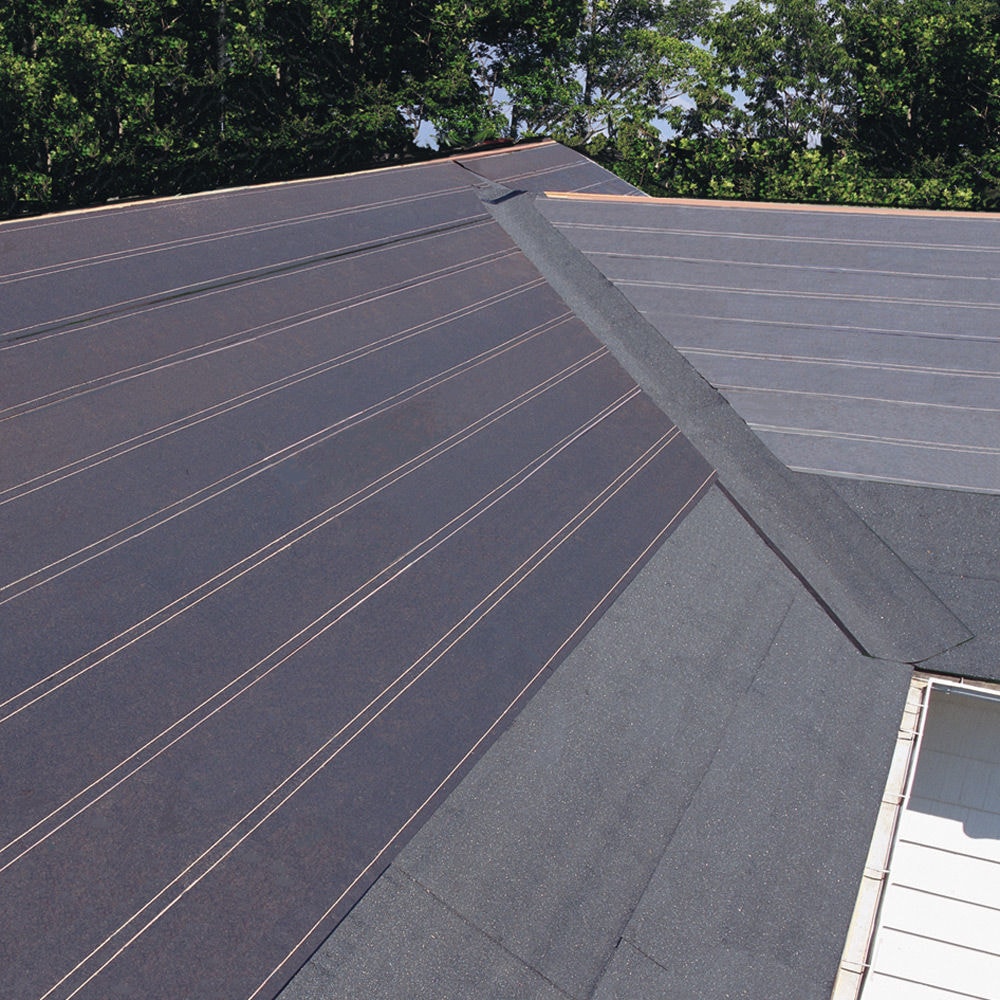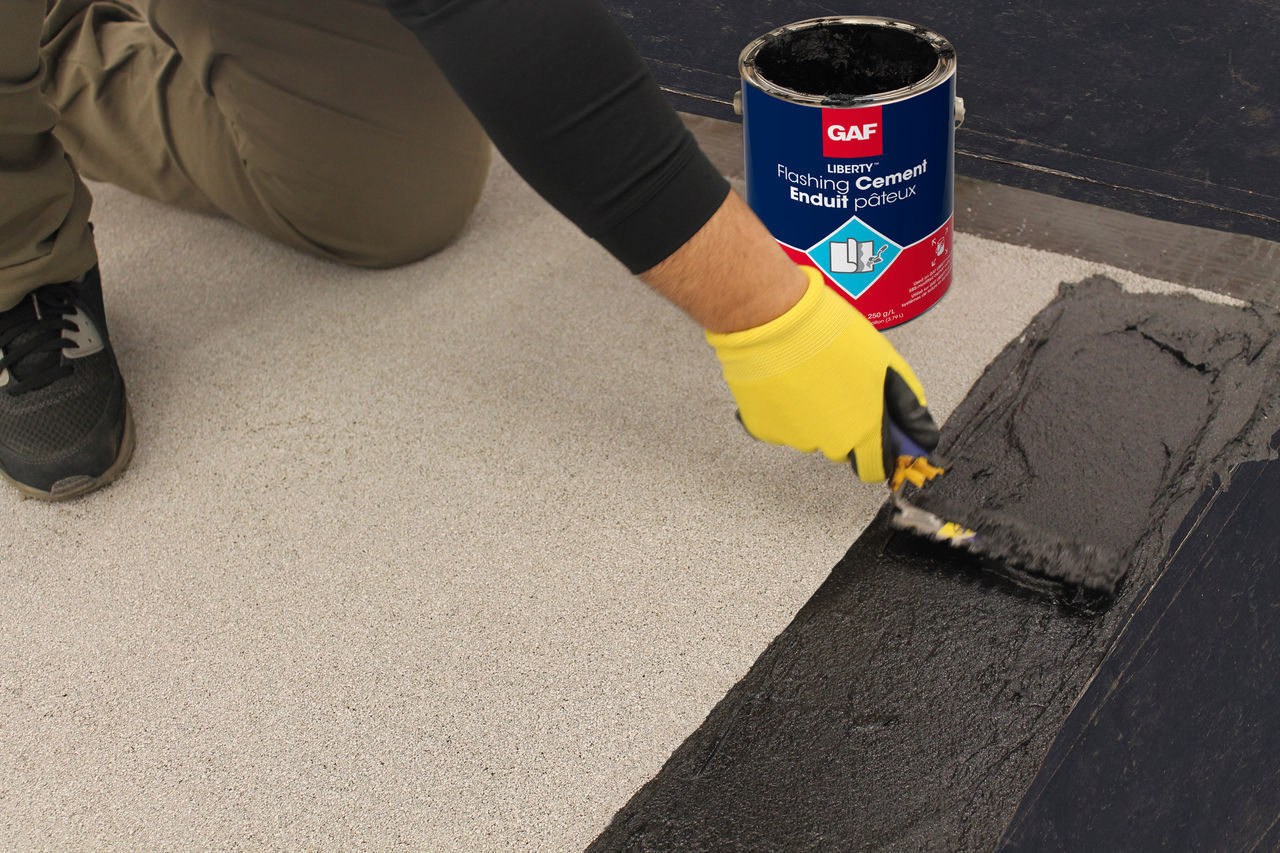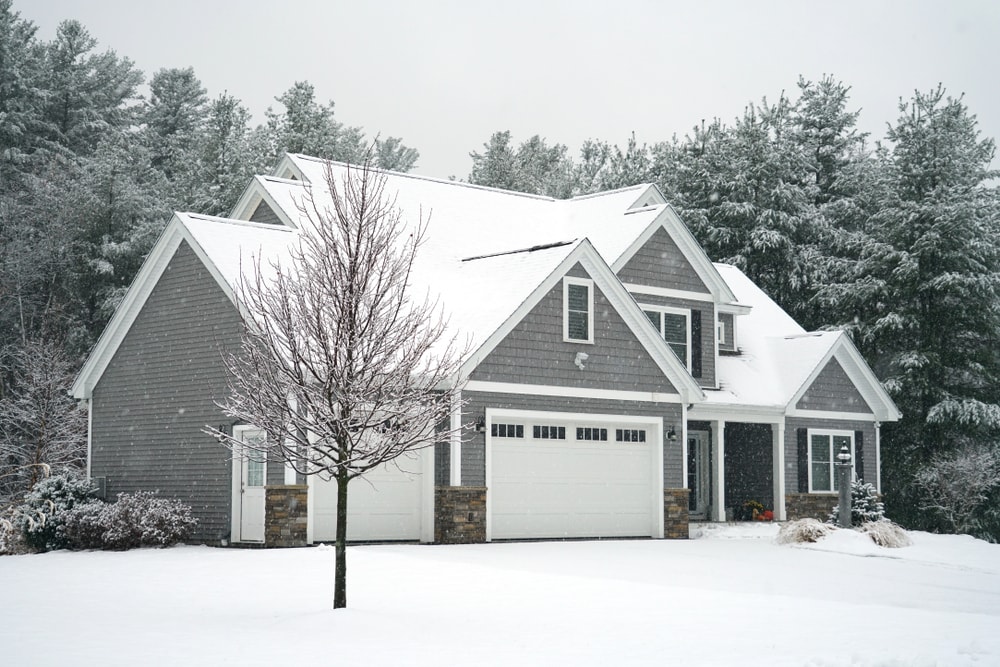Winter doesn't bring an end to the roofing season. Cool weather roofing is often necessitated by emergency roof repairs, and new home builders may not want to wait until spring.
When you're tasked with roofing in the winter, understanding the risks that come with installing shingles in cool weather and being prepared to overcome those challenges can help you achieve success with winter roof installations. Read on to learn best practices and expert tips to achieve a long-lasting GAF roof installation when roofing in cool weather.
Key Risks of Cool Weather Shingle Installation
Shingle Brittleness
When temperatures dip below 40°F/4°C, asphalt shingles will lose flexibility and may crack. As such, workers need to use extra caution when handling, cutting, and moving shingles. When shingles crack, it can lead to leaks and even affect the roof's warranty.
Ineffective Sealant Activation
Asphalt shingles contain a thermally activated sealing strip that bonds the shingles after installation. This sealant strip needs warmth, sun, and temperatures above 40°F/4°C to activate. When shingles are not properly bonded, they are vulnerable to wind uplift and water infiltration.
Worker Safety and Efficiency
Cool weather roofing brings additional safety risks for workers who may encounter frost or ice on the roof. Extra precautions are required to ensure safety, including wearing the proper fall protection gear and cool weather-rated boots and clothing.
Cool conditions can also affect workers' dexterity, causing them to move and work slower. Equipment can also be impacted by cool temperatures, with air compressors struggling to maintain pressure.
Condensation and Moisture Issues
Energy.gov explains that condensation forms when warm, moist air from the home gets into the attic and water vapor condenses on cool surfaces, including the underside of the roof sheathing. Proper roof ventilation can help keep condensation issues at bay.
Benefits of Roofing in Cool Weather
There can be benefits for the homeowner with cool weather roofing. The demand for roof installations tends to be lower during this time, meaning contractors may be more available to take on the work and complete a timely installation. Because it's off season, there may be potential cost savings for the homeowner, too. By addressing roof concerns in the winter, homeowners reduce the risk of further damage that may come with delaying the work until spring.
For contractors, the cooler weather can reduce the impact on the property, with the frozen ground providing a solid surface for staging equipment in the yard.
What to Expect When Roofing in Winter
While weather always plays a role in determining when to install a roof, a forecast of snow could delay the job and require snow removal. Frost in the morning can lead to later starting times, while shorter daylight hours mean crews must wrap up for the day before dark.
As mentioned previously, cool weather roofing affects the activation of the sealing strip on the shingles, and you may need to plan for hand sealing using an approved asphalt cement.
If planning to have heaters, generators, and other noisy equipment onsite, consider notifying neighbors of what to expect and when your crew plans to be onsite.
GAF Pro-Tips for Cool Weather Roof Installation
Proper Material Storage and Acclimation
Proper storage plays a key role in your success during cool weather roofing installations. Don't leave bundles of shingles out in the cold where they can become brittle. Instead, store them in a temperature-controlled environment of 70°F/21°C for at least 24 hours prior to installation.
Don't bring all the shingles up onto the roof at once. Instead, focus on smaller amounts, so they don't cool down too rapidly.

Roof Deck Preparation
Properly preparing the roof deck is another key to success. Ensure the deck is free of snow, frost, or ice and is clean. Once the deck is ready, consider installing protection, like Shingle-Mate®, a roof deck protection that prevents water infiltration from wind-driven rain and is flatter than traditional felts, resulting in an aesthetically pleasing finish.
Installation Best Practices
- Careful shingle handling. Avoid throwing or dropping shingles in cool weather to prevent cracking. Consider manually flattening out shingle bundles that have stiffened for easier installation.
- Hand sealing. Since temperatures are not warm enough for the seal strip to activate, you will need to do this by hand. Using an approved asphalt roofing cement, such as GAF LIBERTY™ Flashing Cement, apply quarter-sized dabs under each shingle tab with a trowel or caulk gun. Press the shingle into the cement to fully seal it. Be careful not to use too much cement, as it can run down the face of the shingle and/or cause blistering.
- Precision nailing. It's important to make sure your nailing is precise, as under-driven nails can puncture the shingle above and over-driven nails can cut into the shingle below. Be sure to frequently check the pressure on your air compressor, as cooler temps can cause the pressure to drop.
- Optimized work schedule. Consider extending the job over several days to allow for installations to occur during the warmest hours. Replace the roof in sections to maximize sun exposure.
- Proper tool maintenance. Be sure to store pneumatic tools in a warm place when not in use, and check to make sure they are properly lubricated before use.

Frequently Asked Questions for Cool Weather Roofing
What's the coolest temperature GAF shingles can be installed in?
The official GAF recommendation is to install shingles at temperatures that are at least 40°F/4°C. Installation can occur in temperatures below 40°F/4°C when contractors adhere to the mandatory precautions and procedures outlined in this article.
Does cool weather installation void the GAF warranty?
The warranty will not be affected if all GAF application instructions are adhered to, including cool weather provisions, such as hand sealing.
Will shingles still seal in cool weather?
Not on their own, since they rely on warmth and the sun to seal naturally. The adhesive won't activate in cool weather, which is why hand sealing under each tab is required.
How long does it take shingles to fully seal if installed in winter?
Once the weather warms and the roof is exposed to the heat of the sun, the shingles will complete sealing naturally. Until temperatures warm up, hand sealing is the only option to ensure bonding.
Should I remove snow from the roof before winter installation?
It is important to have the roof deck free of snow and dry prior to the roof installation. Make sure to follow safe snow removal practices.
How can I ensure proper attic ventilation during winter installations?
Balanced intake and exhaust will reduce the risk of condensation issues and the formation of ice dams in the winter. The ventilation can be evaluated before installation.
Build With Confidence, No Matter the Season
The keys to cool weather roofing success are proper planning and storage, a clean deck, precise placement in a six-nail pattern, and hand sealing. Following these expert tips can ensure the integrity, performance, and longevity of the roof.
For more tips on cool weather roofing installation, explore the GAF residential roofing contractors toolkit.

